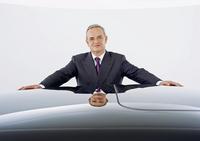Volkswagen Steps Up Its Use Of Plug-In Hybrid Technology
WOLFSBURG / VIENNA – May 9, 2011: International Vienna Motor Symposium, the Chairman of the Volkswagen Group, Prof. Dr. Martin Winterkorn, announced that the Volkswagen Group will be going into production with a range of important models with plug-in hybrid technology starting in 2013/14.
“The electric car will impact the future of individual mobility in crucial ways – and Volkswagen is spearheading this technology. Over the mid-term, the plug-in hybrid offers great potential, because it combines the best of two worlds in one vehicle,” said Winterkorn. The plug-in hybrid offers precisely what many customers expect: unlimited internal combustion engine performance combined with attractive electric mobility ranges in everyday driving. Moreover, Winterkorn noted that there are no limitations to the vehicle’s speed, climbing or towing abilities. He also stated that plug-in technology has excellent potential for reducing CO2 emissions.
“Electric mobility is the task of the century for the automotive industry and the European industrial community as a whole. Manufacturers, suppliers, energy providers, scientists and politicians – everyone must step up to the plate here,” said the Volkswagen chairman. Winterkorn spoke in support of more targeted research funding, especially in the field of electro-chemistry for battery technology.
At the Vienna Motor Symposium Volkswagen also showcased two new engines which will be available shortly: the 1.4-litre TSI Motor E 85 and the new 2.0-litre TDI, which already fulfils stringent BIN5/ULEV emission laws in the USA. Volkswagen’s advanced development of its twincharged 1.4-litre TSI with 118 kW for use with E 85 ethanol fuel, illustrates how the company is extending its line-up of eco-friendly engines and further contributing towards reducing CO2 emissions in internal combustion engines. In the Passat saloon, the combination of the new TSI with a 7-speed dual clutch transmission (DSG) in E 85 operation yields a fuel consumption value of 8.8 litres per 100 km in the NEDC driving cycle, which is equivalent to 144 g/km of CO2. This represents a seven per cent reduction in CO2 emissions compared to an engine operated with Super petrol fuel. The engine is earmarked for use in the Passat and Passat CC, initially in Sweden and Finland, where E 85 fuel has been widely available for many years now.
Unlike in the European automotive market, the share of passenger cars with diesel engines is still quite small in the USA. In recent years, just a few carmakers – notably Volkswagen and Audi – have been able to sell appreciable volumes of vehicles with diesel engines. By introducing the new 2.0-litre TDI, the Volkswagen Group is reaffirming its conviction that diesel engines still have great potential in passenger cars in the USA.
The 2nd generation 2.0-litre TDI, familiar from Europe, was modified and further engineered for the new Passat to be produced in Chattanooga exclusively for the North American market. To satisfy BIN5/ULEV emission regulations in the USA, it was necessary to reduce the engine’s raw emissions and install an SCR (selective catalytic reduction) emissions control system.
The 2.0-litre TDI produces 103 kW (140 PS) and has 320 Nm of torque. It accelerates the Passat from 0 to 60 mph in 9.3 seconds and has an electronically limited top speed of 113 mph. The car’s diesel fuel economy is 35 mpg (miles per gallon), which is equivalent to about 6.7 litres per 100 km.



